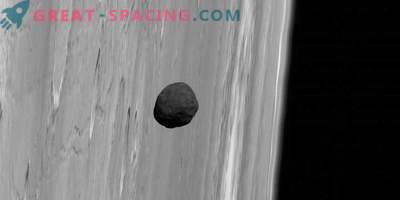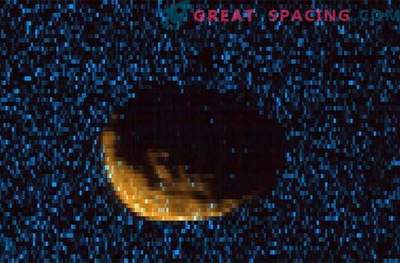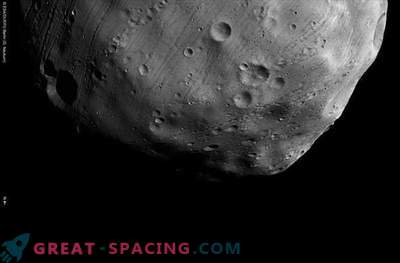
Scientists have long known that Phobos, which is the largest of the two small satellites of Mars, after some time will be destroyed by the tidal influence of the parent planet.
However, a new study shows that Phobos has already begun to collapse.
According to a recent study presented at the meeting of the planetary sciences of the American Astronomical Society in Maryland this week, the long shallow grooves that cut through the satellite's surface are nothing but tension faults.
Previously, scientists assumed that these grooves are the result of a collision with an asteroid, which almost destroyed the satellite. This collision left an indelible impression in the form of the Stickney crater, which is almost six miles wide, which is half the width of the satellite itself. Later analysis showed that the cracks do not emanate from the center of the crater, but arise from another point nearby.
This led to a new theory, according to which the grooves are formed by small debris flying out of Mars and colliding with Phobos, which rotates at a distance of only 5800 miles above the surface of Mars. It is closer than any other satellite that revolves around its parent planet. Terry Herford, a planetary scientist from the Goddard Space Flight Center, Maryland, and his colleagues have another idea. New computer models show that the grooves are aligned in one line, like extensions, treacherously proving the effects of the tidal forces of Mars on Phobos.
"Phobos loses the battle, gradually approaching Mars at a distance of three to six feet every hundred years," said Herford Discovery News. "This means that in the end, in 30-50 million years, the satellite will collide with its parent planet."
"We believe that the grooves are a sign that the body begins to disintegrate under the influence of tidal deformations. Eventually, Phobos will be broken before it reaches the surface of Mars," he said.
"The new computer model also shows that the inside of Phobos is weaker than its outer shell, which is more resilient," added Eric Asfaug, a planetary scientist at Arizona State University.
Scientists have many questions about Phobos and his brother Deimos, both of which are captured asteroids.
“I think this is an exciting place,” said Herford.











































